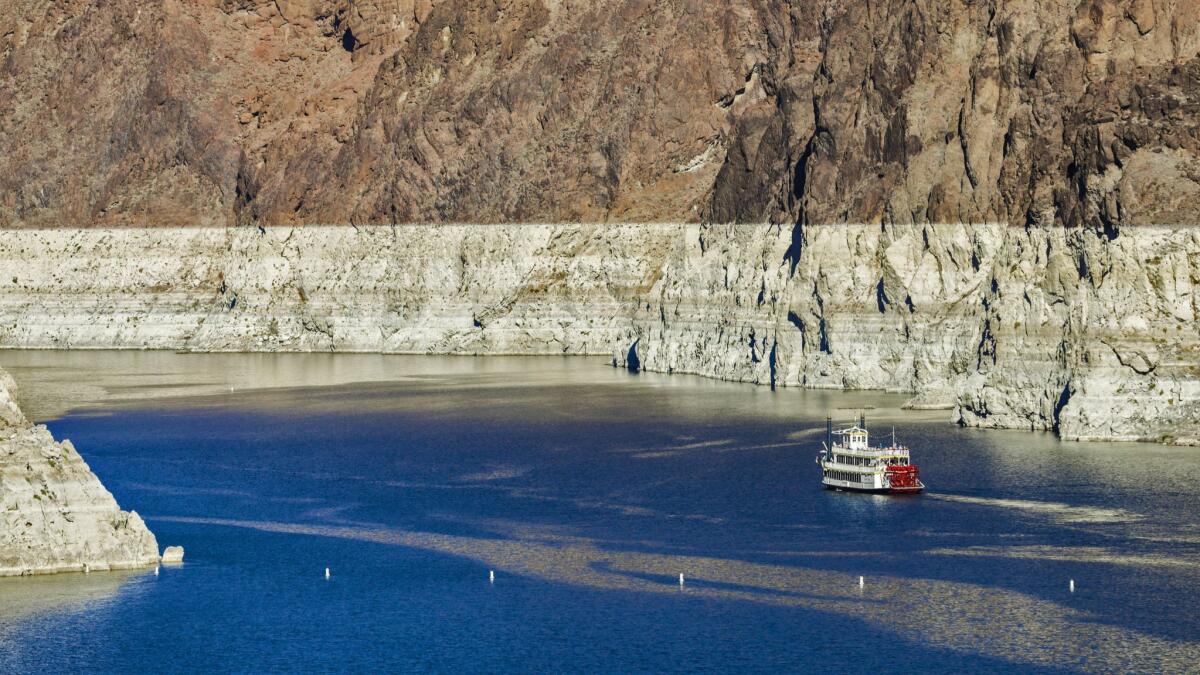Imperial Irrigation District sues to block Colorado River drought plan

- Share via
Just as a long-negotiated agreement for how California and six other Western states will deal with drought on the Colorado River was about to cross the finish line, the river’s biggest user put up a roadblock.
The Imperial Irrigation District in southeast California filed a lawsuit Tuesday asking a state court to block the plan until more analysis is done on the accord’s environmental impacts.
The filing is the district’s latest attempt to put the brakes on the drought pact until the federal government provides $200 million for restoration of the shrinking Salton Sea.
Imperial holds senior rights to the single biggest allocation of river water on the entire length of the Colorado River.
But it refused to sign the drought contingency plan earlier this year, prompting the Metropolitan Water District of Southern California to bypass Imperial and agree to shoulder most of the delivery cuts California may have to make in the future to prevent Lake Mead from falling to dangerously low levels.
Imperial officials last month threatened legal action, and they followed through on Tuesday, the same day President Trump signed federal legislation authorizing the agreement.
“The logic in going forward without IID was that the [drought plan] couldn’t wait for the Salton Sea,” Henry Martinez, the Imperial district’s general manager, said in a statement Wednesday. “This legal challenge is going to put that logic to the test and the focus will now be where it should have been all along — at the Salton Sea.”
In a Superior Court filing, Imperial contends that the MWD violated the California Environmental Quality Act by failing to analyze the impacts of committing to greater river cuts in the future without considering how the agency would make up for the shortfall.
The Salton Sea, which is sustained largely by irrigation drainage from croplands in the Imperial and Coachella valleys, has declined as Imperial and other farm districts have taken land out of production to sell water to MWD and San Diego.
As the shoreline recedes, lake bed contaminated with agricultural chemicals and other pollutants has turned to dust, fouling the air.
Imperial’s fear is that if MWD gets less water from the Colorado, the agency will increase its farm water purchases, accelerating the lake’s decline and pollution problems.
Federal water managers and MWD officials have said the drought plan will not hurt the Salton Sea.
“We looked into this carefully and we designed a program that does not have impacts on the Salton Sea,” said Jeffrey Kightlinger, MWD’s general manager. “I don’t believe we’ve done anything that requires future environmental review.”
With congressional approval and Trump’s signature on the authorizing legislation, the only thing the drought pact still needs is the signature of the Interior Department and the seven states that draw from the Colorado.
Kightlinger expects a signing ceremony to take place in the next few weeks. “I don’t think the lawsuit changes anything on the ground,” he said.
The states’ accord builds on steps that were taken in 2007 as it became apparent that a drought that began in 2000 was not ending.
This winter’s fat snowpack in the upper Colorado River basin is providing some relief, but the river remains in the grip of a historic drought that has slashed storage in its two huge reservoirs, Lake Powell and Mead.
Under the drought plan, Arizona, Nevada and California have agreed to reduce diversions from Lake Mead to prevent levels from falling so low that it would jeopardize hydropower production and reservoir releases.
The reductions will be triggered by Mead’s level at the start of a calendar year.
Arizona, with junior rights, is the first in line to forgo substantial deliveries. Mead has hit the first trigger and the state has already been voluntarily leaving more supplies in the lake.
California will not be required to take less from Lake Mead until its water level falls to an elevation of 1,045 feet above sea level. This year’s wet winter has pushed that further into the future, with federal water managers projecting Mead’s Jan. 1 elevation at 1,084 feet.
The snowpack in the upper river basin is 130% of average. Spring and early summer river flows into Lake Powell, which releases supplies to Mead, are expected to run at 128% of average.
Twitter: @boxall
More to Read
Sign up for Essential California
The most important California stories and recommendations in your inbox every morning.
You may occasionally receive promotional content from the Los Angeles Times.














